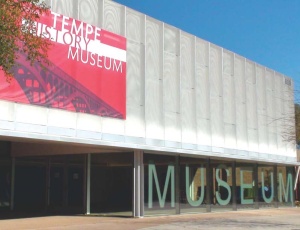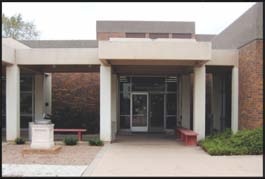While modest in budget, the Tempe Library and Historical Museum renovations bring new life to old buildings.


Tight budgets didn�t restrain creativity during the concurrent renovations of the $8-million Tempe Public Library and the $3.5-million Tempe Historical Museum.
Color and light were used to enhance the public�s experience in both facilities, which are located on the same corner of Southern Avenue and Rural Road.
While it was coincidence that the two side-by-side projects went under the knife at the same time, �logistically it was relatively convenient despite the fact that the two contractors have to share limited space for their layout yards and storage,� says Tempe project manager Scott Balck.
Voters passed an $8-million bond issue to renovate the three-level library�s interior, which meant construction, design fees and furniture, fixtures and equipment had to fit within the budget.
�They weren�t getting a dollar more, so we tried to maximize everything we possibly could,� says Glenn Kubricky, project director with Tempe-based general contractor Okland Construction.
The library opened in September 1989, after it moved from its previous location, which became the Tempe Historical Museum in 1991.
�Even though the building is only 20 years old, things have changed quite dramatically since the late 80s in terms of technology,� says Bill Williams, AIA, partner with Tucson architect Engberg Anderson. �We had to seamlessly incorporate more technology, wiring and
in-floor power and data into the building now that they�ll have over 150 computers for public use.�
Because the first-floor slab is post-tensioned concrete, any drilling of holes for additional cabling adds complications.

�You have to be careful to miss all those tendons so you don�t have a structural failure on your hands,� Williams says.
The busy library sees over a million visitors each year, so it was essential that it remain open during the renovation, which began in July.
�As the economy gets worse, library use picks up,� Balck says. �We�ve got a good contractor who came up with a functional and efficient plan that did not disturb operations as much as anyone thought.�


Post a comment to this article
Report Abusive Comment